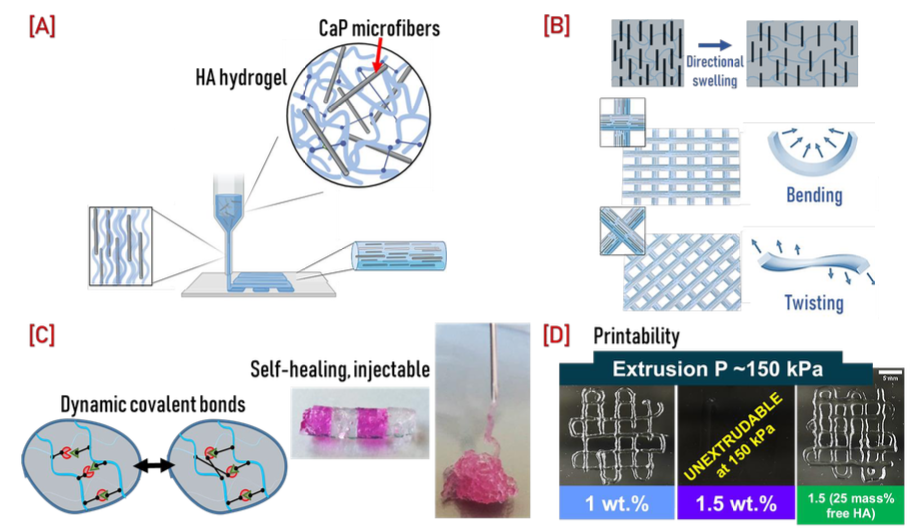- Imprimer
- Partager
- Partager sur Facebook
- Partager sur X
- Partager sur LinkedIn
Séminaire
Le 7 mai 2025
Saint-Martin-d'Hères - Domaine universitaire

Séminaire de Ana Božović (PhD fellow, CERMAV / IAB)
Ana Božovića,b, Rachel Auzély-Veltya, Lucie Sanceyb and Raphaël Michela
aUniversité Grenoble Alpes (UGA), CNRS, CERMAV, 38000 Grenoble, France
bUGA, INSERM U1209 CNRS UMR5309, Institute for Advanced Biosciences, 38000 Grenoble, France
Contact: ana.bozovic cermav.cnrs.fr (ana[dot]bozovic[at]cermav[dot]cnrs[dot]fr)
cermav.cnrs.fr (ana[dot]bozovic[at]cermav[dot]cnrs[dot]fr)
One of the key challenges in tissue engineering is the development of biocompatible materials that mimic the complex architecture and dynamic morphology of native tissue. To address that, this PhD project aims to design and study a biocompatible composite hydrogel with physicochemical properties tailored for 3D printing of intricate architectures with programmable shape-morphing capabilities.
Our approach combines a hyaluronic acid (HA) hydrogel with calcium phosphate (CaP) microfibers, both biocompatible and biodegradable. We envision that CaP microfibers could be aligned by the shear experienced during printing (Fig. 1-A). The so-obtained structural anisotropy should result in directional swelling of the gel, which could be harnessed to induce shape-morphing upon swelling (Fig. 1-B)(1).
As a first step toward this goal, we focused on designing a biocompatible and printable hydrogel. We employed dynamic covalent crosslinks between HA chains to impart the hydrogel with rheological properties suitable for extrusion-based 3D printing (Fig. 1-C) (2).
The present talk will focus on how physicochemical characteristics of the hydrogel influence its rheological behavior, and, consequently, its printability (Fig. 1-D). This work led to printable inks, whose long-term stability and cell-compatibility are currently under study.
References
1. Gladman, A.S.; Matsumoto, E.A.; Nuzzo, R.G.; Mahadevan, L.; Lewis, J.A.;. Biomimetic 4D printing.
Nature Materials 2016, 15, 413-418. DOI: 10.1038/nmat4544
2. Figueiredo, T.; Jing, J.; Jeacomine, I.; Olsson, J.; Gerfaud, T.; Boiteau, J.G.; Rome, C.; Harris, C.; Auzély Velty, R.; Injectable Self-Healing Hydrogels Based on Boronate Ester Formation between Hyaluronic Acid Partners Modified with Benzoxaborin Derivatives and Saccharides. Biomacromolecules 2020, 21, 230–239. DOI 10.1021/acs.biomac.9b01128
Date
Mercredi 7 mai de 14h à 15h.
Localisation
Saint-Martin-d'Hères - Domaine universitaire
Amphi A. Rassat, 470 Rue de la Chimie, 38610 Gières
Contact
Clément de Loubens
clement.de-loubens [at] univ-grenoble-alpes.fr
- Imprimer
- Partager
- Partager sur Facebook
- Partager sur X
- Partager sur LinkedIn